Musician & Historian: An Appreciation
By Chris Holderness, February 2024
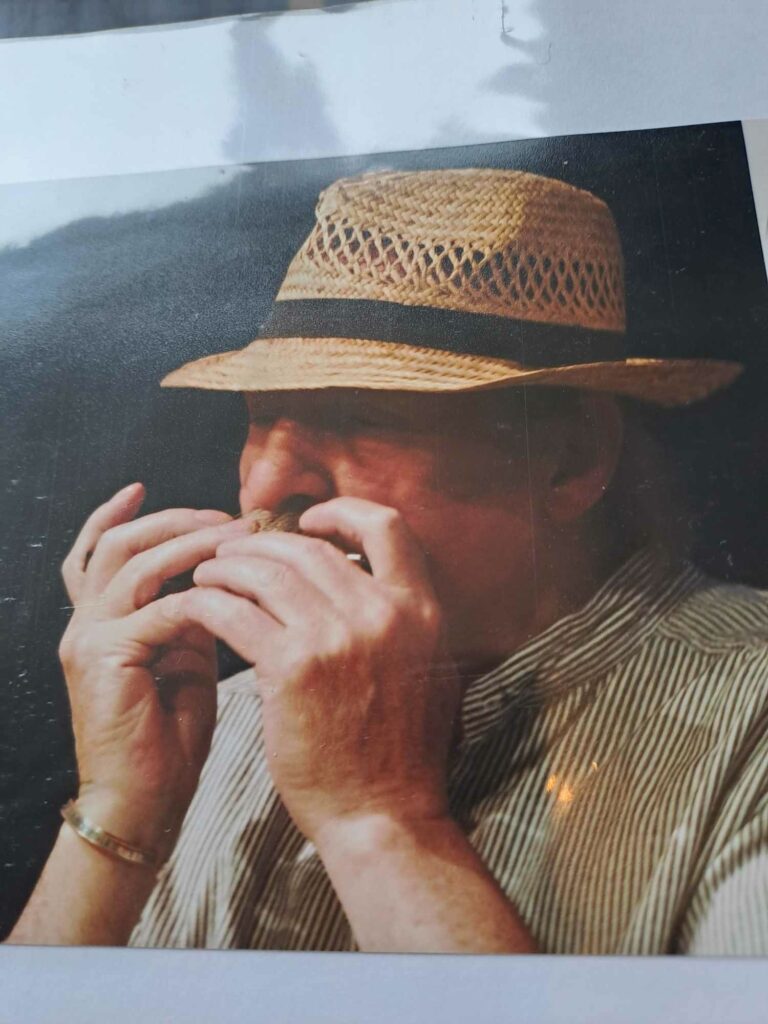
It all started in 2004, my association with Des Miller. As a fiddle player I was already very much aware of the local tradition and had a fair repertoire of tunes with a local provenance. I was very aware of the fact that much had been collected and had acquired every recording available. I wished to find out more; I fancied myself a researcher, seeking out the details about those whose music I enjoyed playing and listening to. (1) It was this in a roundabout way which led me to Des.
It was then my habit to go along to several folk music nights in central and north Norfolk, of which Dereham Folk Club was probably the most prominent. At one of those Gwyn Jones, knowing my interest in local tunes, loaned me a folder in which there were a few written down. In amongst these (actually notations from Vaughan Williams of several tunes) was a headed piece of notepaper proclaiming Rig-a-Jig-Jig: A Norfolk Music History Project and giving Des’ address. I was intrigued.
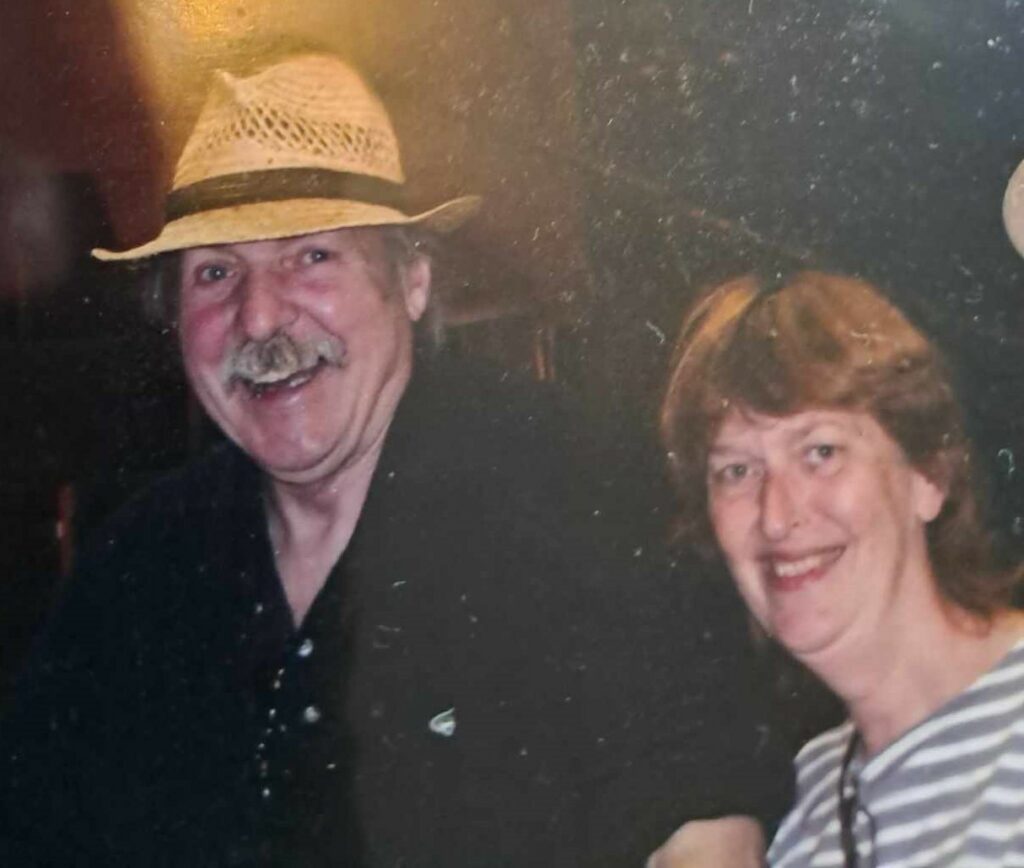
I wrote and shortly received a reply, was invited over, and thus began my long association with Des and his partner Barbara Jane. What I was shown impressed me greatly. Over time Des had compiled a considerable amount of information about the county’s traditional musical history – the Project in question. He had made many trips out to collect this oral history, usually accompanied either by Molly Barrett or Melody Lovelace. A fair archive had been established.
The highlight of all this was an event at the turn of the century to celebrate some vital issues of local traditional music. 2000 was a great year for the release of recordings of Norfolk music: Topic Records had put out no less than four CD sets: a reissue of the seminal Sam Larner Now is the Time for Fishing record, a lengthy CD of Walter Pardon, a double CD of Harry Cox and a greatly expanded version of the celebrated English Country Music disc, featuring Walter and Daisy Bulwer and Billy Cooper. Des had supervised a local launch of these recordings at The Playhouse in Norwich, with extensive displays and music. It was a great success, although not without price as Des, undoubtedly affected by the stress induced by everything, suffered a heart attack immediately afterwards.
Mercifully he recovered but things had gone quiet subsequently. Des was very enthusiastic about reviving the whole project – and we certainly did! What followed was years of research, as time allowed, all round the county, following whatever leads we had. I have written about this elsewhere, detailing the frustrations and successes of the venture, and don’t propose to repeat myself here, but instead refer the reader to the Two Sides of the Same Coin – Collecting Musical Memories in Norfolk article (2) on this site. Suffice to say that a huge amount of information was gathered over a long time, in a hugely enjoyable undertaking. It was a rewarding exercise to see the various characters come to life, as we pieced together details of their lives, the places they played, sang and danced.
A highlight perhaps was the large amount of information pertaining to Sam Larner and music in Winterton – after a letter to the Eastern Daily Press the phone didn’t stop ringing – which gave a very complete picture of music in that area. (3) Also, making contact with the still-vivacious Lily Codling, the last surviving member of the Bulwers’ Time and Rhythm Band, which led to many great musical nights in Shipdham, as much as anything else, and our encounter with Walter Newstead, recounted in Two Sides of the Same Coin, as above. We trailed around the countryside, with much lively discussion of everything as we went, formulating theories, such as the importance of the once-prevalent railways in the spread of dulcimer-playing in the region.
Des was a great companion and could certainly tell a great story, as has been noted elsewhere. As well as discussing our findings, he would regale me with tales of playing music in Leeds years before with Paul Roberts and later on as part of the idiosyncratically-titled Ted Crawford’s Band with Phil Heath-Coleman and Reg Hall (Ted Crawford didn’t exist!)
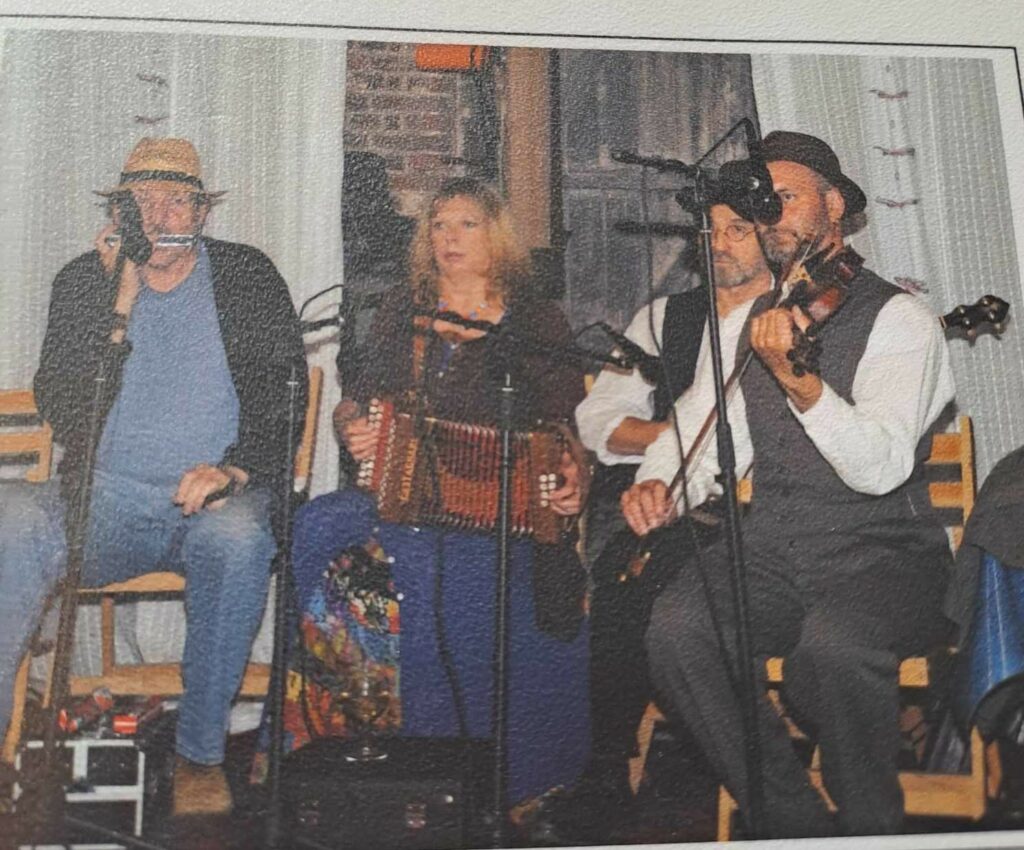
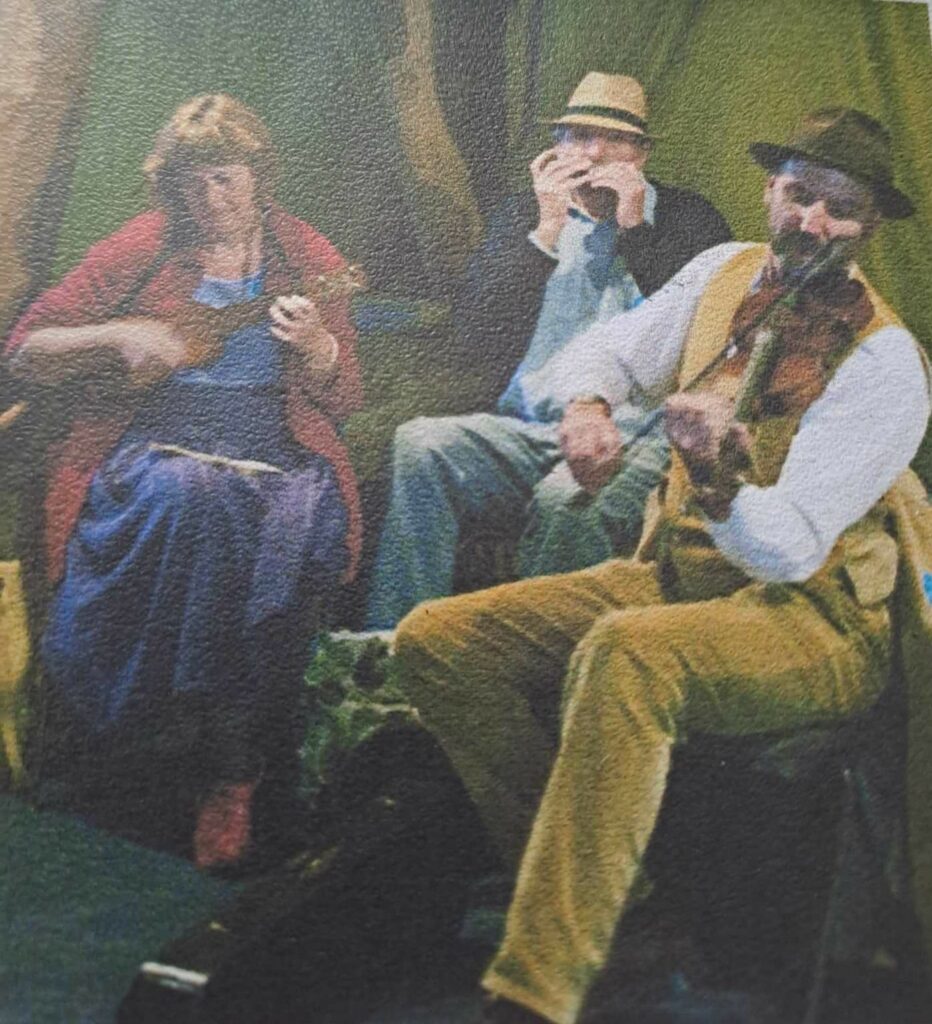
Rig-a-Jig-Jig
As we restarted the Project, the shared love of tunes with a local provenance and weekly Tuesday nights in The Nelson in Norwich led to the formation also of the band – with the same name as the project. Once again, the inception and career of Rig-a-Jig-Jig country dance band has been covered in Two Sides… Des played mouth organ, providing a steady, driving lead which helped to propel the tunes but keep everything in order. A Des mouth organ solo, often a sprightly Rosalie My Prairie Flower, was always a high point of a show. Unforgettable from these days was Des’ regular utterance of “Bloody Hellfire!” to greet any noteworthy or untoward situation which may arise. The band was very busy for a decade or so, and Des was always there in the middle of it. Amongst the highlights of this was our long association with the town of Wells-next-the-Sea, the vibrant concerts in the Granary Theatre as part of Carnival Week and equally boisterous occasions on the Albatros boat in the harbour, which led to two live recordings of the band and various friends. (4)
Des wasn’t just a fine mouth-organ player; he was adept on many instruments, as became apparent if he happened to pick up something laying around – fiddle, mandolin, melodeon. I never also realised fully, despite years of close musical affinity, just what an accomplished finger-picking guitarist he was too.
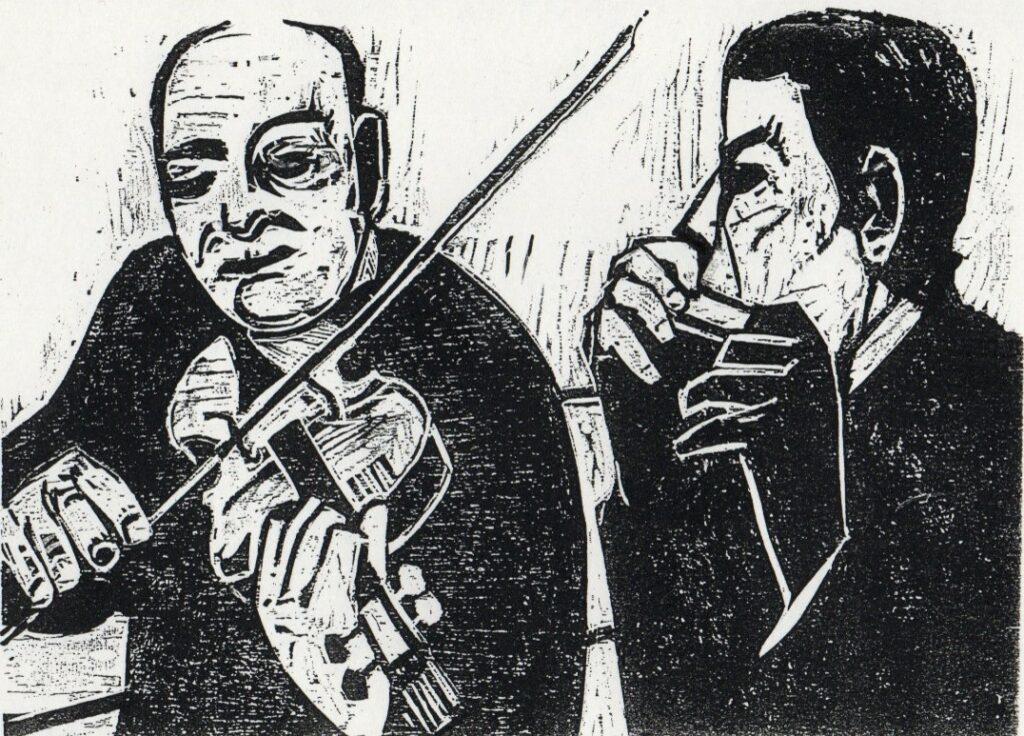
I have to admit also that I never really knew a great deal about certain aspects of Des’ life, despite our friendship. He had often mentioned his printing work in Leeds, but I never knew just how successful or long-lasting his Leeds Other Paper was. Likewise, I knew of Des’ political convictions but not that he was such a committed anarchist. A further aspect of his life, which I only really got to see later on in visits to his and Barbara’s home in Hethersett, was his fantastic drawing and painting. He would sometimes talk of his childhood and experiences as a teenager in what was essentially an old-fashioned working-class home, and he had often mentioned art school in Colchester and various escapades, but I only found out recently that he was born during an air raid in a north London hospital in 1942!
Des’ partner Barbara Jane recently summed him up succinctly as “anarchist, artist, historian, musician”. He was all of those things and more: an inspiring person and musical colleague, and a generous and kind-hearted friend.
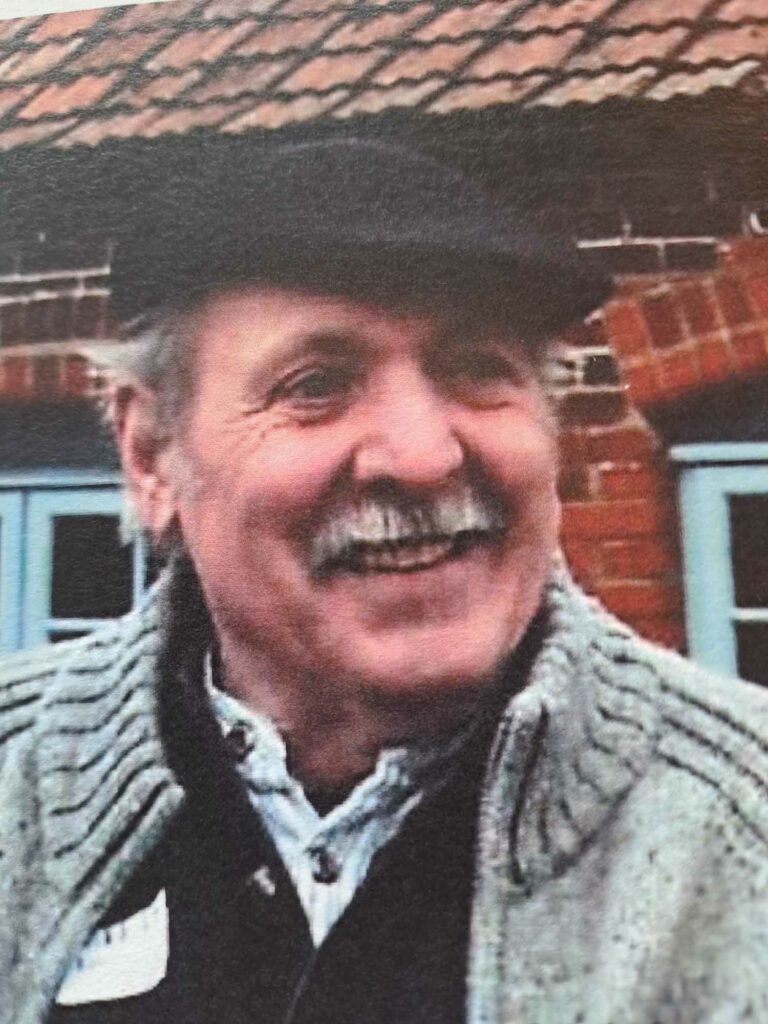
Chris Holderness, February 2024
Notes:
- The first person I was determined to research was Blakeney fiddler Herbert Smith. This eventually led to my first article as result of all of the research: MT179 Herbert Smith: Fiddling Blacksmith of Blakeney (2006) which can be read on this site, as can all of the other articles which were the result of the research undertaken by Des and myself.
- Two Sides of the Same Coin – Collecting Musical Memories in Norfolk (2021) – on this site.
- The information was used for the booklet notes to the Musical Traditions CD set of Sam Larner Cruising Round Yarmouth MTCD369-0 (2014) Notes as article MT296.
- The two CDs were Rig-a-Jig-Jig and Friends: All at Sea (from the Albatros) and All Ashore (from the Granary Theatre).
The Order of Service for Des’ funeral can be found below. In it, you will see a few more examples of his artwork. Barbara Jane will be holding a retrospective exhibition of his works later in the year.